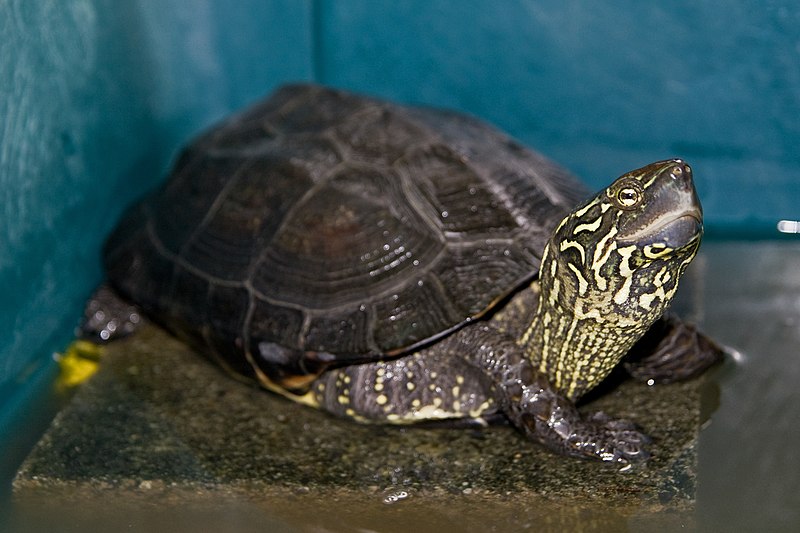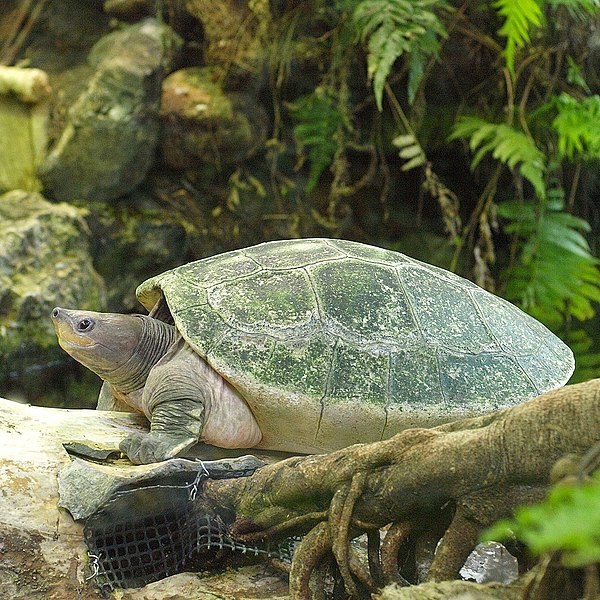 Asia’s freshwater turtles face an unprecedented extinction crisis, which may soon result in the loss of 90 or more species. In 2001, I joined other turtle enthusiasts in south Florida to help process nearly 10,000 turtles of many species that had been confiscated on route to food markets in China. The magnitude of the response to their plight heartened me, but today, unfortunately, we are still fighting an uphill battle. Please see Part 1 of this article for details. Following is a bit more on this sad situation.
Asia’s freshwater turtles face an unprecedented extinction crisis, which may soon result in the loss of 90 or more species. In 2001, I joined other turtle enthusiasts in south Florida to help process nearly 10,000 turtles of many species that had been confiscated on route to food markets in China. The magnitude of the response to their plight heartened me, but today, unfortunately, we are still fighting an uphill battle. Please see Part 1 of this article for details. Following is a bit more on this sad situation.
The Problem
The capture of wild turtles for food markets located in China and elsewhere in Asia represents the greatest threat to their continued existence (please see article below). The damming of rivers for hydroelectric power is also a significant problem, and rare turtles that command high prices in the pet trade are still being collected.
Many conservationists believe that the food-market demands can be met by farmed turtles, and indeed Chinese Softshell Turtles and other species are being raised commercially…but much more effort needs to be put into this aspect of turtle conservation.
Ongoing Rescue Efforts
Zoos are trying – I can, for example, recall breeding the Painted Terrapin (Callagur borneoensis, please see photo) and the Giant River Terrapin (Batagur baska) at the Bronx Zoo in the mid 80’s – but both are still critically endangered and rarely bred in captivity; money and space are in short supply.
I’ve always favored cooperative efforts between zoos and responsible private individuals – indeed, the 2001 rescue operation was only possible due to the generosity of a “non-biologist” who hosted the effort on his property, and 2 private individuals in NY each personally cared for 2,000-2,500 turtles at one point – but movement in that direction is slow at best. In fact, my sense of the situation is that many zoos are pulling back from earlier commitments to work with concerned private turtle-keepers.
 A number of laudable efforts, often undertaken at great expense, have been launched by private turtle-interest groups. The Asian Scholarship Program for Chelonian Conservation, originally conceived by the New York Turtle and Tortoise Society, is a prime example.
A number of laudable efforts, often undertaken at great expense, have been launched by private turtle-interest groups. The Asian Scholarship Program for Chelonian Conservation, originally conceived by the New York Turtle and Tortoise Society, is a prime example.
Further Reading
Mentioned in Part 1 but bears repeating here – an excellent article on the status of Asia’s turtles along with photos from food markets in China – READ THIS!
NY Times article providing background information on the SE Asian turtle trade.
ThatReptileBlog Turtle Care and Conservation Articles
Chinemys reevesii image referenced from wikipedia and originally posted by Σ64
Callagur borneoensis image referenced from wikipedia and originally posted by Open Cage
 That Reptile Blog – Reptile, Amphibian and Exotic Pet Care and Information
That Reptile Blog – Reptile, Amphibian and Exotic Pet Care and Information


